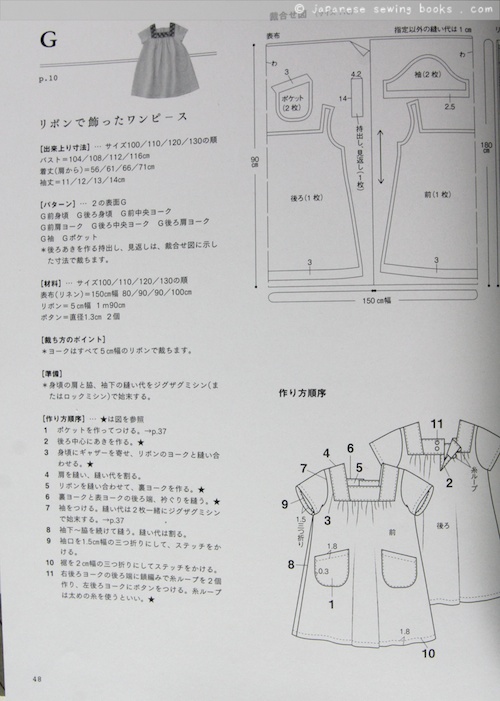After posting the dictionary of sewing terms, I shall now go through an example of a typical pattern you can find in the sewing books. Most pattern books follow a similar structure such as this one.
You will usually find something like the above, with the size information as well as the list of materials and procedure, as well as two diagrams. One for cutting of the fabrics and one for the procedure. Let’s break it down into 4 parts to get a clearer picture.
First, determine the size you need. Then locate then pattern (G in this case) and prepare the materials.
Special notes to take care of when cutting, preparation details, and then order of making. (refer to diagram below)
For most books, unless specified, the seam allowance is usually 1cm. The seam allowances are usually denoted by a number and a line/arrow to the seam.
Hope this will help! I didn’t translate most of the section of “order of making” since it is specific to this garment and will not make much sense to another project, but understanding what the individual sections are about and the diagram conventions, as well as referring to the dictionary of terms, it should help you get started.
Just leave a comment if you have any questions.






















